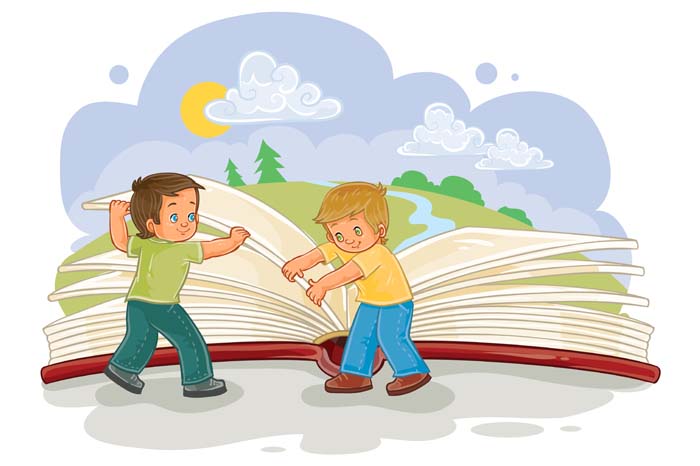Upcycling refers to the creative reuse of discarded materials or waste products to create new high-quality products or materials rather than simply recycling waste in the same form again. It involves transforming so-called “waste” from potentially useful material flows back into resource flows again. Upcycling repurposes anything from plastic bottles and tech discards to textile scraps and cardboard packaging into innovative products or furnishings often more durable and valuable than what the base materials may have been. The goal is to reduce landfill waste, conserve resources, lower carbon footprint and drive circular economic opportunities all at once through intelligent waste reuse rather than disposal.
The Origins and Concept of Upcycling:
Upcycling is a term that originated with the larger recycling movement that gained popularity in the 1970s in response to environmental concerns. The process of recycling involves using waste materials or out-of-date resources to create new, equal products. One approach to achieve this is to reuse old plastic bottles to make new ones.
Upcycling aims to take recycling to the next level. Instead of merely recreating the same product, upcycling uses discarded items, components, or waste materials to make something completely different of higher value or quality compared to what the base elements were originally. Scrapped plastic bottles, for instance, could be upcycled into a bag or furnishings instead of basic bottles again.
The actual term “upcycling” was first coined by Reiner Pilz in 1994 to reference the concept of adding value during recycling processes by creating improved products that could also have longer active lifetimes.
The notion of upcycling stems from recognizing the massive and rising amounts of consumer waste that modern lifestyles generate, often destined for landfills or incineration. Upcycling aims to transform such waste streams from refuse into resource flows again. But this requires creativity and innovation to visualize opportunities to repurpose waste and design higher-value products from discards.
Benefits of Upcycling Practices:
Adopting upcycling techniques as an alternative to conventional recycling procedures or garbage disposal has several social, economic, and environmental benefits:
- Reduces Landfill Waste:
- Conservation of Resources:
- Climate Change Impact:
- Economic Opportunities:
- Creativity and Innovation:
Because materials and goods that are thrown away as garbage are repurposed into new products, upcycling reduces the quantity of waste that is dumped in landfills. Waste reduction is essential since landfill space is limited.
When materials from existing products are reused in upcycling, fewer new raw materials need to be harvested or extracted for production processes. This results in environmental savings since extraction requires land, water, and energy and leads to ecological damage.
Producing new products from virgin resources generates more greenhouse gas emissions compared to reusing discarded materials. Upcycling thus lowers carbon footprint.
Designers, artists, carpenters, and small firms that specialise in upcycling might find employment prospects due to the creative reuse of waste streams in this industry. It also creates new markets for goods that support sustainable living.
The possibilities for upcycling materials are endless, limited only by imagination and creativity. Upcycling encourages inventive repurposing of everything from technology waste to plastics, glass, textiles, and paper. Even car tires and billboards get upcycled these days.
Everyday Examples of Upcycling:
Upcycling has become a growing trend across fashion, furniture design, home decor, and lifestyle products as more makers and companies adopt upcycling practices. Here are some common examples of everyday products made through innovative upcycling processes:
- Clothing created from discarded textiles, used saris, obsolete tapestries, or vintage lace is often mixed with sustainable fabrics.
- Bags Restored from old truck tarpaulins, recycled banners and innovative use of seat belts, tire tubes etc.
- Jewellery crafted from broken pottery shards, salvaged computer parts, upcycled watches or other repurposed metals.
- Art & Decor from reusing glass bottles, lightbulbs, old utensils, waste wood, and a range of surprising everyday discards.
- Furniture ranging from chairs made from discarded skis to tables created from doors and scaffolds transformed into shelves.
So, anything from household appliances to computer components finds renewed purpose through upcycling design. Beyond product design, upcycling also offers opportunities for repurposing buildings left in disuse for a long. Structure reuse also minimizes construction waste.
Essential Aspects of Effective Upcycling:
While the basic premise of upcycling is transforming waste into valuable products, there are certain key aspects that determine how effectively materials are actually being upcycled:
- Waste Source:
- Recyclability:
- Functionality:
- Quality and Safety:
- Scalability:
The waste materials themselves being upcycled ideally should be abundant, easily available discards rather than scarce resource streams themselves in demand. If scarce resources are used, it defeats the purpose of ecological conservation.
The end product itself should lend itself to being reused or recycled at the end of its lifetime rather than ending up as waste again.
Upcycled products, furnishings, or accessories should serve practical long-term functions and remain relevant over time rather than being short-term decoration items that create waste again.
In the transformation process, any toxic or hazardous substances present in waste materials should be safely minimized or eliminated rather than carried into the end products or left as residual by-products.
The upcycling initiatives ideally should work at scales making substantial dents in reducing waste streams rather than remaining niche efforts. Impact depends on scaling.
Upcycling is most effective environmentally when keeping these key principles in mind, minimizing waste flows in a circular rather than linear economic approach.
Upcycling Movements Globally:
Across both developing and industrialized countries worldwide, the upcycling movement continues to gather interest and momentum. Global furniture brands like IKEA now champion upcycling by designing products made from waste wood, textile offcuts, and discarded plastic. Clothing retailers like H&M and Levis also increasingly offer upcycled fashion lines.
Besides large companies, a vibrant movement of responsible designers, eco-entrepreneurs, and sustainability-focused firms are popularizing upcycling practices spanning diverse products from shoes to skateboards. On crowdsourcing platforms like Kickstarter, innovative upcycling ideas now regularly get funded.
Upcycling Trends to Expect:
Several promising upcycling trends are emerging, driven by ongoing innovation and tech breakthroughs, as well as shifting consumer mindsets favoring circular solutions.
Currently, popular do-it-yourself videos enable turning disused items into new furniture or reimagined objects. Similarly various digital maker communities allow home and pro upcycling enthusiasts to exchange ideas, showcase creations, sell products as well access reused materials like e-waste components.
Reflecting demand, more recycling drop-off points and reclamation stores catering to upcycling creators are opening. Storage spaces allowing access to community discards can drive local upcycling. Mapping tools pinpointing waste data also assist in matching unexploited resources with potential users.
Advances like 3D printing further empower prototyping directly from recycled plastics, e-waste metals, or composites. New polymer processing and digital manufacturing techniques allow improved disassembly of complex products, aiding upcycling. Future modular product design focused on extending item lifetimes will also facilitate creative upcycling reuse.
Supported by conducive policies, access to waste streams and tech tools, a flourishing community driven Maker movement can drive the upcycling segment both for economic and ecological wins through creative repurposing of materials.
Potential futures see local micro-factories, design labs and fabrication spaces equipped for community level upcycling innovation using digitized open tools allowing product lifecycle extension in decentralized circular systems.
The origins of modern upcycling stemmed from traditional arts and crafts like quilting, which repurposed textile remnants. Artisans across cultures worldwide have also sustainably upcycled resources like scrap wood or fabric for centuries. Building on such traditions both policy initiatives as well start-up accelerators are now strengthening global upcycling efforts.
Developing countries, including India, Vietnam, South Africa, and Brazil, already have thriving upcycling enterprises employing waste-pickers and artisans in income opportunities while addressing eco challenges. With rising environmental consciousness and technology advances allowing inventive reuse at scale, upcycling promises to only grow in impact globally.
For more such interesting blogs, Visit EuroKids














